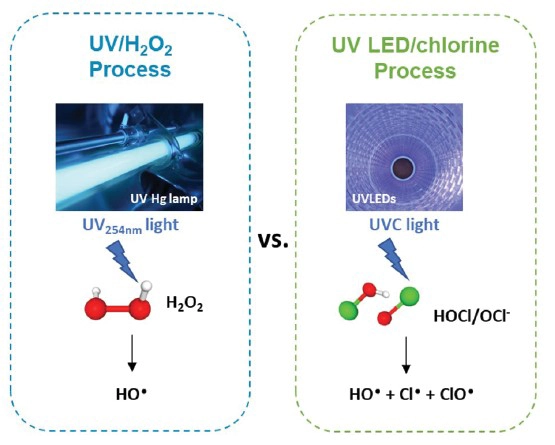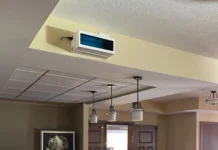By Priya Dharwadkar, Ph.D. student, Cranfield Water Science Institute, Cranfield University; Irene Carra, Ph.D., Lecturer in Chemical Processes, Cranfield Water Science Institute, Cranfield University; Peter Jarvis, Ph.D., Professor of Water Science & Technology, Cranfield Water Science Institute; Olivier Autin, Ph.D., Lead Process Engineer, Typhon Treatment Systems
The occurrence of anthropogenic contaminants, such as pesticides, in potable water sources has become a prevalent issue worldwide. In the United Kingdom (UK), compliance limits for pesticides in potable water are 0.1 µg/l for individual pesticides and 0.5 µg/l for total pesticides. This has challenged water utility companies as they must improve their resilience to manage changing raw water quality and meet increasingly stringent guidelines. One such company is Anglian Water (Anglian).
Anglian is one of the largest water and wastewater companies in the UK that operates in an area with intensive arable agriculture. As a result, Anglian is faced with pesticide occurrences in its potable raw water supply. Now, more than ever, there is a need for robust treatment technologies focused on removal of target organics – namely, pesticides. The drinking water treatment group at Cranfield University’s Water Science Institute explores advanced oxidation processes (AOPs) as a possible solution.
AOPs generate hydroxyl radicals, which can oxidize persistent micropollutants, like pesticides, that may not be managed by conventional treatment processes. UV / chlorine has emerged as an attractive alternative to the conventional UV / H2O2 AOP due to the availability of chlorine disinfectants, like sodium hypochlorite (NaHOCl), at water treatment works. In addition to hydroxyl radicals, the UV / chlorine process also can generate reactive chlorine species (RCS). Since micropollutant removal in AOPs depends on the reactivity of the target contaminants to different radical species, the presence of RCS can offer additional routes of degradation for certain micropollutants.
Chlorine also can undergo photolysis by absorbing light at higher wavelengths. This allows for the opportunity to use novel UV LED technology, such as that which is developed by Typhon Treatment Systems (Typhon), a water treatment technology supplier responsible for delivering the world’s first full-scale UV Disinfection Guidance Manual (UVDGM)-validated UV LED reactor.
UV LEDs are useful for application in the UV / chlorine AOP since they can be configured to emit at targeted wavelengths compatible for chlorine photolysis. UV LEDs also allow for flexible reactor design and operation compared to conventional germicidal lamps because they do not require a warm-up time or involve the use of fragile mercury-based components.
The production of radicals in UV / chlorine is highly dependent on both pH and wavelength of irradiation. This must be accounted for when exploring the application of UV LEDs in the UV / chlorine process. Hypochlorite dissociates into hypochlorous acid (HOCl) and hypochlorite ion (OCl-), depending on the solution pH. Each of these species also has very different photolytic properties at a given wavelength.
Current works comparing UV / H2O2 and UV / chlorine use UV 254 nm lamps for both processes and do not take into account the synergistic impact of pH and wavelength for UV / chlorine, especially at higher UVC wavelengths. The authors research considers the conventional UV254 nm / H2O2 and the UV LED / chlorine process operating at different pH and wavelengths. This is key to understanding the factors that influence the production of radical species in the UV / H2O2 and UV LED / chlorine processes and will lead to an accurate fundamental basis for comparison of these AOPs.
This research is a collaboration between Cranfield University, Typhon and Anglian Water. Working with the technology provider and end-user, the research group aims to answer the questions posed when implementing novel LED technology for AOP applications at scale.
The UV LED / chlorine AOP tests were conducted using bench-scale UV LED reactors developed by Typhon. These reactors emit light at different wavelengths in the high UVC range. They also have a non-uniform irradiation field in comparison to those studied in previous works where a collimated beam apparatus typically is used.
Priority pesticides were selected based on their persistence in existing water treatment processes. Parametric studies were conducted to evaluate the impact of different operating conditions, such as use of the different oxidants, wavelengths of irradiation, and pH on radical production and pesticide degradation.
The results of this study will provide a detailed comparison of the conventional UV / H2O2 and UV LED / chlorine processes and allow for a better understanding of the upstream and downstream requirements for the successful application of LEDs in AOPs for drinking water treatment.






